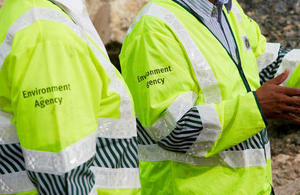£500,000 funding for innovative research to diagnose TB in cattle faster
Ground-breaking scientific research aimed at detecting tuberculosis in cattle (bTB) will take place after five projects were awarded a combined investment of £500,000, the government has announced today (Friday 28 August).
bTB is one of the most difficult and intractable animal health challenges that England faces today. More than 30,000 cattle are slaughtered each year due to bTB and cattle diagnostics are one of a range of tools that will help the country eradicate the disease in England by 2038 as we shift away from badger culling.
The programme, run by Defra on behalf of England, Scotland and Wales, will fund innovative research projects using cutting-edge technologies such as machine learning aimed at detecting infection in cattle herds faster.
Five schemes, led by various leading research institutes, have been selected to receive up to £100,000 each for up to 12 months for proof of concept research.
UK Deputy Chief Veterinary Officer Richard Irvine said:
Bovine TB leads to the slaughter of over 30,000 cattle every year and considerable trauma for farmers as they suffer the loss of highly prized animals and valued herds.
This investment, which we hope will enable infection to be diagnosed and acted upon more quickly in the future, underlines the government’s commitment to invest in world-leading scientific research in our battle to tackle this insidious disease.
Christianne Glossop, CVO for Wales, said:
We are pleased to work alongside colleagues across the UK in introducing this new diagnostics programme, which will help give farmers across Wales and the UK the confidence that instances of TB will be identified early, allowing farmers and relevant authorities to respond accordingly and limiting the spread of the disease.
The rapid, early identification of infection is a cornerstone of our eradication programme. We look forward to viewing the results of the project once new diagnostic methods are in place.
These research proposals will use a range of new concepts and technologies which aim to detect TB infections in cattle, including:
- machine learning for improved interpretation of the bTB skin test
- rapid and increased sensitivity test to determine bTB status
- mass spectrometry profiling of non-invasive cattle samples (mainly saliva or nasal fluids), to accurately detect bTB at early infection stage
- mid-infrared spectroscopy of milk samples as a rapid and accurate non-invasive tool for monitoring the bTB status in a herd
- identifying novel diagnostics antigens to underpin a future test for Detecting Infected amongst Vaccinated Animals (DIVA)
Alongside this, the Animal and Plant Health Agency’s (APHA) research to speed up the diagnosis of TB in cattle and other livestock will soon be put into practice. From next year we expect to be able to use a PCR (polymerase chain reaction) test, which can identify bTB in post-mortem tissue samples significantly faster than traditional methods, and produce results with seven days rather than the usual two months.
The test should be ready for routine use at APHA laboratories from early 2021, initially on suspected lesions of TB detected at routine slaughter of cattle, and from non-bovine animals. This will bring benefits to affected animal keepers by reducing the time taken to determine whether TB is present in a sample and, if the PCR results are negative, lift the herd movement restrictions much sooner than under the current protocols.
The government’s response to an independent review of its 25 year bTB strategy, led by Professor Sir Charles Godfray, set out plans to phase out intensive culling in the next few years, and outlined the need for a combined approach which includes improved testing, alongside other measures such as badger and cattle vaccination to eradicate the disease in England by 2038.
In July, it was announced that APHA had been given the green light for trials of a new cattle vaccine and DIVA (Differentiating Infected amongst Vaccinated) skin test thanks to world-leading research from government scientists. We are now preparing to start field trials for these tools in 2021.
Defra has today published a report on behalf of England, Scotland and Wales which highlights the financial impact of TB on our beef and dairy sectors. The report shows the cost of a TB breakdown directly borne by cattle farms varies significantly, with a median value of around £6,600 across all farms in the survey. Across England and Wales median costs for herds of more than 300 cattle are around £18,600 whilst those for herds up to 50 cattle are around £1,700. Median costs for chronic breakdowns over 273 days are around £16,000.
The latest statistics on bTB in England show the overall number of new herd incidents of the disease is down by 10% in the last year (to May 2020), with a 15% reduction in the number of herds not officially free of the disease due to an incident. Full details of these statistics are available here.
The latest statistics on bTB in Wales show the overall number of new herd incidents of the disease is down by 10% in the last year (to May 2020), with a 11% reduction in the number of herds not officially free of the disease due to an incident. Full details of these statistics are available here.


